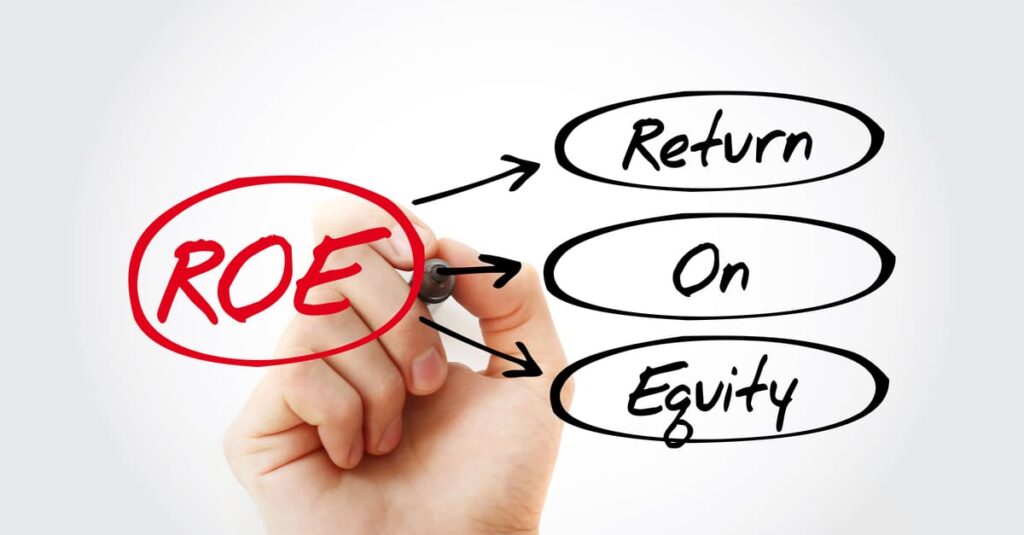Return on Equity (ROE) is a fundamental financial metric that measures a company’s profitability relative to the shareholders’ equity. It’s a crucial indicator for investors and analysts. It provides insights into how efficiently a company is using its equity to generate profits. Let’s delve deeper into what ROE is, how it’s calculated, and why it matters, using an illustrative example.
ROE is a profitability ratio that shows the net income generated as a percentage of shareholders’ equity. In simpler terms, it measures how effectively a company is generating profits from the money invested by its shareholders.
The formula to calculate ROE is:
ROE = Net Income / Shareholder’s Equity x 100%
- Net Income refers to the company’s profits after deducting expenses and taxes.
- Shareholders’ Equity represents the shareholders’ ownership stake in the company, calculated as total assets minus total liabilities.
Importance of ROE:
- Efficiency of Capital Utilization: A higher ROE indicates that the company is utilizing shareholder funds more efficiently to generate profits. It shows positively on management’s ability to allocate resources effectively.
- Comparative Analysis: ROE allows for comparisons between companies within the same industry or sector. It helps investors identify companies that are generating higher returns relative to their equity base.
- Investment Decision Making: Investors often use ROE as a part of their decision-making process when evaluating potential investments. A consistently high ROE can signal a financially healthy and attractive investment opportunity.
Example:
Let’s consider Company XYZ, which reported a net income of $500,000 for the fiscal year. The company’s balance sheet shows shareholders’ equity of $2,000,000. Using the formula mentioned earlier, we can calculate the ROE:
ROE = 500,000 / 2,000,000 × 100% = 25%
This means that for every dollar of shareholders’ equity, Company XYZ generated a return of 25 cents in net income.
Therefore, ROE serves as a vital metric for assessing a company’s profitability and efficiency in utilizing shareholder funds. Investors and analysts use ROE to measure a company’s financial health, compare performance across peers, and make informed investment decisions. Understanding and analyzing ROE can provide valuable insights into a company’s long-term prospects and sustainability.
In summary, ROE acts as a barometer of a company’s ability to generate profits from its shareholders’ investments, making it an indispensable tool in financial analysis.
Ketaki Dandekar (Team Arthology)
Read more about Return on Equity Ratio here – https://www.investopedia.com/terms/r/returnonequity.asp
